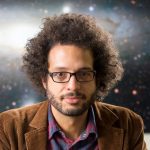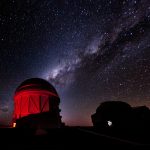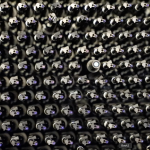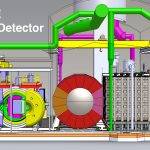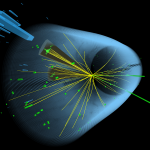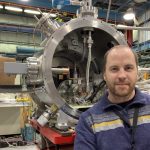What if human analysis, combined with machine learning, could advance the study of the universe? The U.S. Department of Energy awarded Fermilab scientist Brian Nord a $2.5 million Early Career Research Award to explore that possibility. Nord has envisioned a new hybrid data-analysis method to undertake the project. It integrates the strengths of artificial intelligence and interpretations of statistics in ways that could potentially advance the studies of cosmology.
cosmology
From Universe Today, May 30, 2021: The Dark Energy Survey camera (DECam) was funded by the Department of Energy (DOE) and was built and tested at Fermilab. The DES took place over 6 years from 2013 to 2019, and looked at over 1/8th of the night sky for a total of 758 night
The Dark Energy Survey collaboration has created the largest ever maps of the distribution and shapes of galaxies, tracing both ordinary and dark matter in the universe out to a distance of over 7 billion light years. The analysis, which includes the first three years of data from the survey, is consistent with predictions from the current best model of the universe, the standard cosmological model. Nevertheless, there remain hints from DES and other experiments that matter in the current universe is a few percent less clumpy than predicted.
DESI will capture and study the light from tens of millions of galaxies and other distant objects to better understand our universe and the properties of dark energy. The formal start of DESI’s five-year survey follows a four-month trial run of its custom instrumentation that captured 4-million spectra of galaxies — more than the combined output of all previous spectroscopic surveys. Fermilab has contributed multiple components to the international collaboration led by Berkeley Lab.
From Forbes, Feb. 25, 2021: Fermilab scientist Don Lincoln writes about a supercomputer at the National Astronomical Observatory of Japan that explores the history of the universe by simulating over 4,000 universes.
From AZoMaterials, Feb. 18, 2021: Fermilab scientist Jeff McMahon and his research team have designed a new kind of metamaterials-based antireflection coating for the silicon lenses used in cameras used to capture the cosmic microwave background.
From Forbes, Feb. 22, 2021: Fermilab scientist Don Lincoln explains how modern cosmology imagines our universe is an astronomical confection with three primary ingredients: ordinary matter, dark matter and dark energy.
A physicist making great advances in particle detector technology, Estrada is recognized by the American Physical Society Division of Particles and Fields for his creation and development of novel applications for CCD technology that probe wide-ranging areas of particle physics, including cosmology, dark matter searches, neutrino detection and quantum imaging.

